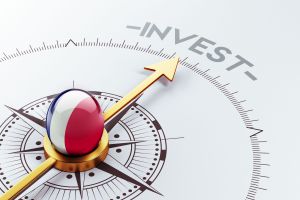OP-ED: Hvorfor verden bør følge Kina og investere i Afrika FREMTID
Hendrik du Toit, co-CEO i Investec Gruppe hevder afrikanske økonomier har vært spenstig og kontinentet er langsiktig vekst historie - særlig grønn vekst - fortsatt attraktivt å investere i Afrika.
By Hendrik du Toit is co-CEO of Investec Group
I remember a time, over 20 år siden nå, når nesten ingen profesjonelt forvaltet kapital flyttes over landegrensene i Afrika. When aid and corruption drove the investment narrative. When Africa was called the “håpløst kontinent”. When sustainability wasn’t even part of an investor’s vocabulary. We’ve come a long way.
The millennium heralded rapid growth across the African continent. At around 3%, standard priser på afrikansk infrastruktur er noen av de laveste i verden. Africa has the fastest growing population and is seeing a wave of innovation and entrepreneurship sweeping across the continent. The latter is strongly enabled by mobile phone technology which has directly facilitated a financing revolution. Off-grid solcelleanlegg er proliferert, kjøpt via månedlige utbetalinger på mobiltelefoner, through companies like Mobisol and M-Kopa.
Selvfølgelig, globale og nasjonale begivenheter, inkludert 2014 oljeprisen sjokk rammet store økonomier spesielt hardt; vi har sett de senere nedgang i ytelse i Angola, Nigeria, and my home country of South Africa. But overall, African economies have been resilient and the continent’s long-term growth story – particularly green growth – remains compelling.
har investert milliarder av dollar i fornybar energi over hele kontinentet. Sent i fjor, Nigeria utstedt en N10.69 milliarder (US $ 29 millioner) grønn binding to fund local solar and forestry projects. This is Africa’s first sovereign green bond – one of only a handful in the world (sammen med Kina, Frankrike, Polen, Fiji og Indonesia). Kenya will soon follow.
De Verdensbanken also estimates that aggregate growth in Sub-Saharan Africa for 2018 vil være rundt 3.2%, opp fra 2.4% i fjor. The continent is expected to host six of the 10-fastest growing economies of the world in 2018, mens tradisjonelle forvaltningskapital (inkludert pensjon og fond) are forecast to grow to around US$1.1 trillion by 2020, up from US$634billion in 2014.
Kort oppsummert, Afrika er veldig mye “open for business”, particularly for investors who are chasing yield and diversification. China’s got the message, committing to US$60 billion in new investment in major capital projects across Africa. Indeed, Kina har vært en integrert del av Afrikas foryngelse ved å bli Afrikas største eksport reisemålet, den største kilden til import og mer nylig sin største kilden kapital, både egenkapital og gjeld.
Dette er positive signaler, but a lot more capital is still needed, spesielt fra store institusjonelle investorer. Estimates put the Afrikansk infrastruktur underskudd på rundt US $ 90 milliarder every year for the next decade. Across the continent, 620 million mennesker fortsatt ikke har strøm; 319 millioner mennesker lever uten tilgang til pålitelig drikkevann; og bare 34% har veiforbindelse.
Det er noen ting som kan hjelpe. for det første, “Blande” offentlig og privat kapital kan forbedre en eiendels avkastnings- og risikoprofilen, so vehicles which use development money to mitigate investor risks can attract much needed commercial investment. Some of these vehicles – like Valutaveksling, which offers FX hedging in emerging markets – have successfully mobilised billions of dollars of private money for African projects.
Another example is the Emerging Africa Infrastructure Fund (EAIF) with projects ranging from water supply in Rwanda to solar power in Uganda. The EAIF is part of the Private Infrastructure Development Group (med egenkapital fra regjeringer, inkludert Storbritannia, Sverige, Tyskland og Nederland) and recently announced that it had tilt sin første kommersielle utlåner i global forsikringsselskapet Allianz, as part of a $385 million fund-raising round. This investment signals a shift in appetite for African risk from institutional investors. These vehicles need to be scaled and replicated.
for det andre, to attract investment for high-impact assets like climate-resilient, sustainable infrastructure, development banks need to be more effective at crowding i private capital using instruments like political risk insurance and guarantees, not crowding them ute. I beste fall, de multilaterale utviklingsbanker (MDBs) mobilisere mindre enn $1 av privat kapital for alle offentlige dollar over sine porteføljer. They should target much higher mobilisation ratios and sharply increase their share of private sector activities (som i dag bare står for rundt 30% av MDB aktiviteter).
For det tredje, frontier countries must compete for investor dollars by making it easier for the private sector to do business. This requires strong, politisk ledelse, depth in local capital markets, the right legal framework and transparent policies. In particular, local policies should support regional simplicity to facilitate cross-border operations that can generate scale. For eksempel, a very important, but much-overlooked regulatory amendment recently saw the amount that Sørafrikanske avgang midler kan investere i resten av Afrika økning fra 5% til 10%. It’s only when public markets are deep enough for strong exits that we’ll see bigger and bigger deals happening.
Viktigst, if we really want to see sustainable growth and the associated economic and financial returns, investeringen samfunnet må lede. We need to take a leaf out of China’s book, omfavner afrikansk infrastruktur som en investeringsmulighet, utnytter risikoreduserende verktøy og adressering det enorme gapet i risikopersepsjon mellom framvoksende og utviklede markeder. Vi kan også bruke vår investere makt til å drive verdi for aksjonærene, mens prioritering “grønn”, bærekraftig utvikling (f.eks. through initiatives like Climate Action 100+).
This is all part of how we move away from an “aid-based” narrative to one of business and investment. It is also how we can provide the platform for economic inclusion of the world’s most youthful and fastest growing labour force. I dream of a future shaped by bold and wise investment decisions.
KILDE: CNBC Afrika

